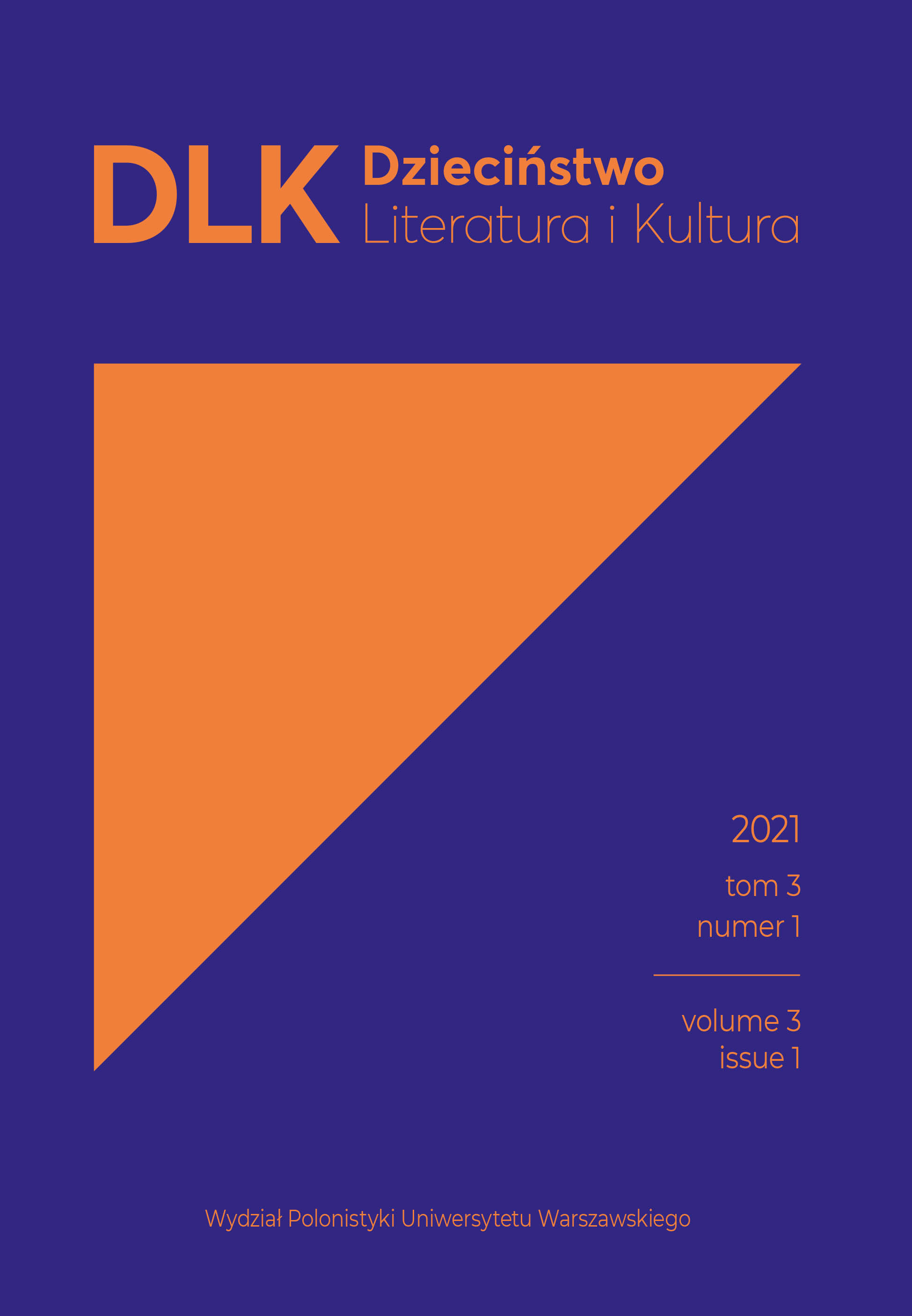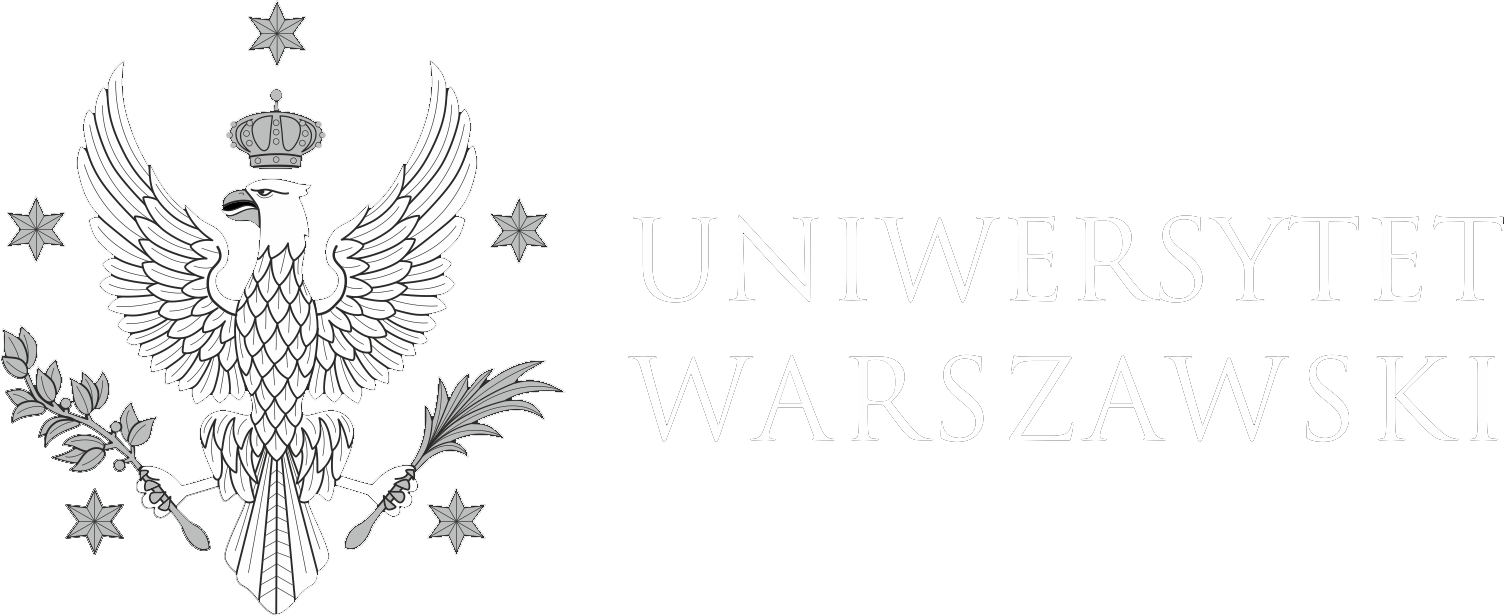“Did the red thing happen?”, or How the Creators of the Film Turning Red Address the Theme of Adolescence
Abstract
The article presents a multimodal analysis of the animated film Turning Red, directed by Domee Shi (2022), exploriong how its creators address the theme of adolescence. As the presented state of research shows, this is a new perspective on the discussed animation. The creators of the production highlight various aspects of adolescence, such as physical changes (menstruation, body hair, unpleasant body odor), mood swings, irritability, heightened emotionality and sensitivity due to hormonal changes, teenage rebellion, difficulties in the mother-daughter relationship, as well as an identity crisis. These themes are metaphorically embodied in the protagonist’s transformation into a red panda. The article can contribute to the development of research on multimodal media and provide a starting point for analysing the stylisation of youth language used in the animation.
Keywords
multimodal analysis; adolescence; animated film; menstruation; Turning Red
References
Antosik, J. (2023). Problemy rodzinne we współczesnych bajkach animowanych. Edukacja Elementarna w Teorii i Praktyce, 18(4), 127–144. https://doi.org/10.35765/eetp.2023.1871.10.
Azhari, R. C., Ambalegin. (2022). The pragmatic analysis of cooperative principle on Turning Red movie. Ideas, 10(2), 1487–1495. https://doi.org/10.24256/ideas.v10i2.3179.
Azura Putri, T., Nurochman, N. (2023). Jungian conscious and unconscious psychological types of Meilin “Mei” Lee in Turning Red movie. Journal of Language and Literature, 11(1). http://doi.org/10.35760/jll.2023.v11i1.8523.
Bobrowski, J. (2016). Językowa stylizacja historyczna w Rycerzu Lecha Majewskiego. Przegląd Humanistyczny, 60(2), 155–163.
Czerkas, K. (2023). „Królestwo samotnej duszy”, czyli konceptualizacje pojęcia ‘samotność’ w filmie animowanym pt. Kraina lodu. Poradnik Językowy, 805(6), 50–65. https://doi.org/10.33896/PorJ.2023.6.3.
Desi, D., Oktoma, E., Solihat, D. (2023). The analysis of interjection used in Turning Red movie script. Jurnal Ilmiah Wahana Pendidikan, 9(25), 264–273, https://doi.org/10.5281/zenodo.10421048.
Diah Anggraeni, A., Hellystia, D. (2022). The representation of fantasy comedy in movie posters entitled Turning Red using semiotics theory. JADEs Journal of Academia in English Education, 3(2), 161–185. https://doi.org/10.32505/jades.v3i2.4729.
Drygas, M. J. (2015). Analiza warsztatowa filmu dokumentalnego Usłyszcie mój krzyk. Images, 16(25), 147–160. https://doi.org/10.14746/i.2015.25.15.
Filmweb (2022), To nie wypanda. Pobrane 10 maja 2024 z: https://www.filmweb.pl/film/To+nie+wypanda-2022-866841/posters.
Floriani, R. (2023). Psychoanalysis: The reasons of body changing in a movie Turning Red. Journal on Education, 5(3), 6471–6475. https://doi.org/10.31004/joe.v5i3.1430.
Forceville, C. (2016). Visual and multimodal metaphor in film. W: K. Fahlenbrach (red.), Embodied metaphors in film, television, and video games: Cognitive approaches (s. 17–32). Routledge.
Forceville, C. (2017). From image schema to metaphor in discourse: The force schemas in animation films. W: B. Hampe (red.), Metaphor: Embodied cognition and discourse (s. 237–256). Cambridge University Press.
Forceville, C., Paling, S. (2018). The metaphorical representation of depression in short, wordless animation films. Visual Communication, 20(1), 100–120. https://doi.org/10.1177/1470357218797994.
Górska, E. (2001). O znaczeniu wyrażeń językowych w ujęciu gramatyki kognitywnej. Scripta Neophilologica Posnaniensia, 3, 57–67.
Gurba, E. (2009). Uwarunkowania relacji rodzice – dorastające dzieci. W: M. Kielar-Turska (red.), Studia nad rozwojem i wychowaniem. W osiemdziesiątą rocznicę powstania Zakładu Psychologii Rozwojowej i Wychowawczej na Uniwersytecie Jagiellońskim (s. 153–170). Wydawnictwo UJ.
Hanifah, Marta, R. F., Panggabean, H., Amanda, M. (2023). Family communication dynamics: Equilibrium with dialectical tension in Turning Red film. Jurnal Studi Komunikasi, 7(1), 49–64. https://doi.org/10.25139/jsk.v7i1.6046.
Hannibal, C. (2017). Subjective perspective as creative metaphor in the animated film. Mediaesthetics, 2. https://doi.org/10.17169/mae.2017.63.
Kadek Diah Darmayani, N., Gusti Ayi Gde Sosiowati, I., Gusti Agung Istri Aryani, I. (2023). Conversational implicature analysis in Turning Red movie script. Ulil Albab, 2(7), 2575–2582. https://doi.org/10.56799/jim.v2i7.1665.
Karolczuk, E. (2009). Kobiecość jako źródło cierpień. Matki i córki w polskim kinie. W: S. Jagielski, A. Morstin-Popławska (red.), Ciało i seksualność w kinie polskim (s. 155–172). Wydawnictwo UJ.
Kochań-Wójcik, M., Piskorz, J. (2010). Zmiany w zakresie postrzegania i oceny własnego ciała wśród kobiet od okresu dojrzewania do dorosłości. Psychologia Rozwojowa, 15(3), 21–32.
Kowalski, G. (2022). Modele analizy i identyfikacji metafor wizualnych. Biuletyn Polskiego Towarzystwa Językoznawczego, 78, 151–167. https://doi.org/10.5604/01.3001.0016.2016.
Kujawa, K. (2022). To nie wypanda! Poczytaj o edukacyjnych zaletach seansu. Film w Szkole. Pobrane 9 lipca 2024 z: https://filmwszkole.pl/to-nie-wypanda-poczytaj-o-edukacyjnych-zaletach-seansu/.
Kurz, I. (2023). Animatopia. Studium porażki. Dialog, 798(5). Pobrane 9 lipca 2024 z: https://www.dialog-pismo.pl/w-numerach/animatopia-studium-porazki.
Lakoff, G., Johnson, M. (1980). Metaphors we live by. University of Chicago Press.
Langacker, R. (2009). Gramatyka kognitywna. Wprowadzenie (E. Tabakowska, tłum.). TAiWPN Universitas. (wyd. oryg. 2008).
Liberska, H. (2001). Ograniczenia edukacji seksualnej w percepcji młodzieży. Psychologia Rozwojowa, 6(3–4), 431–441.
Łukasz, A. (2019). Wychowanie seksualne w rodzinie. W: O. S. Lisovec (red.), Students’kij naukovij vimіr socіal’no-pedagogіčnih problem s’ogodennâ: Zbіrnik materіalіv. ІІІ Mіžnarodnoї naukovo-praktičnoї konferencії 14 travnâ 2019 roku, Nіžin (s. 23–31). Nìžins’kij deržavnij unìversitet ìm. Mikoli Gogolâ.
Mahar Ditriwan, G., Nyoman Tri Ediwan, I., Made Netra, I. (2023). Commissive illocutionary act used in Turning Red movie. Ulil Albab, 2(7), 2564–2574. https://doi.org/10.56799/jim.v2i7.1688.
Mentari, J. A., Firdaus, M., Yukamana, H. (2024). Character educational values in the movie Turning Red and its implication toward character education of young learners. Journal on Education, 6(2), 15191–15200. https://doi.org/10.31004/joe.v6i2.5374.
Mirucka, B. (2003). Poszukiwanie znaczenia cielesności i ja cielesnego. Przegląd Psychologiczny, 46(2), 209–223.
Neisya, Aprilia, F., Triwulandari, E. (2024). Body discipline in the movie Turning Red: Foucauldian discourse. Lire Journal, 8(1), 33–44. https://doi.org/10.33019/lire.v6i2.214.
Radochońska-Wasiewicz, E. (2020). Skracanie dzieciństwa w dobie kultury instant. XVIII Międzynarodowa Konferencja Naukowa „Edukacja XXI wieku”. Pobrane 10 maja 2024 z: http://www.konferencja.21.edu.pl/uploads/6/3/9/9/6399009/2.2.3._radochoska-wasiewicz.pdf.
Safana, I. R. P. (2022). The representation of Chinese-Canadian parenting styles for daughter depicted in movie Turning Red. Struktural, 1(1), 335–342. https://doi.org/10.33633/str.v3i1.7697.
Sanjaya, K. K. A., Utami, N. M. V. (2023). Respect value found in Turning Red movie. Elysian Journal, 3(2), 62–71. https://doi.org/10.36733/elysian.v3i2.4941.
Septaria, H. N., Ambalegin, A. (2023). Positive politness strategies used by the characters in Turning Red movie. English Journal of Indragiri, 7(2), 453–472. https://doi.org/10.61672/eji.v7i2.2580.
Shi, D. (reż.). (2022). Turning Red [To nie wypanda] [film]. Pixar Animation Studios.
Sikora, I. (2013). Dubbing filmów animowanych. Strategie translatorskie w polskim dubbingu anglojęzycznych filmów animowanych. Oficyna Wydawnicza PWSZ w Nysie.
Surzykiewicz, J. (2012). Współczesne dziewczyny nie mają problemów?. Ośrodek Rozwoju Edukacji. Pobrane 10 maja 2024 z: https://www.ore.edu.pl/wp-content/uploads/phocadownload/pracownie/wspczesne-dziewczyny-nie-maj-problemw.pdf.
Tambor, A. (2023). Przekład tytułów filmowych jako problem translatologiczny i (glotto)dydaktyczny. Poradnik Językowy, 805(6), 66–78. https://doi.org/10.33896/PorJ.2023.6.4.
Tanzil, J. O., Andriano, S. (2023). Roland Barthes semiotic analysis in Turing Red movie. Communicate, 10(2), 138–158. https://doi.org/10.37535/101010220236.
Wasilewska, A. (2013). Tabu w literaturze dziecięcej, czyli zabrania się zabraniać!. Problemy Wczesnej Edukacji, 21(2), 90–96.
Waszakowa, K. (2020). Wieloaspektowość pojęcia „konceptualizacji” w gramatyce Ronalda Langackera (spojrzenie z perspektywy użytkownika terminologii kognitywnej). LingVaria, 15(1), 9–30. https://doi.org/10.12797/LV.15.2020.29.01.
University of Warsaw Poland
https://orcid.org/0009-0006-8163-0080

This work is licensed under a Creative Commons Attribution 4.0 International License.
Open Access Policy
All articles presented on the pages of ”Dzieciństwo. Literatura i Kultura” are published in open access under a Creative Commons license - Attribution 4.0 International (CC BY 4.0). It means that:
- they can be made available and quoted under the condition of explicit and clear indication of the author/authors of the referenced text;
- you cannot use legal or technological means that would limit others in using the text under the terms of the license.
More information: https://creativecommons.org/licenses/by/4.0/





